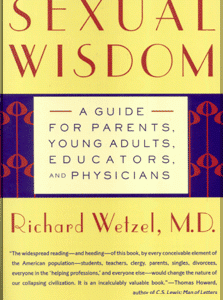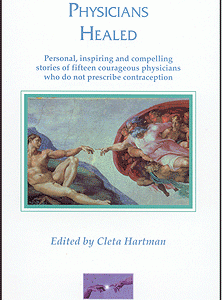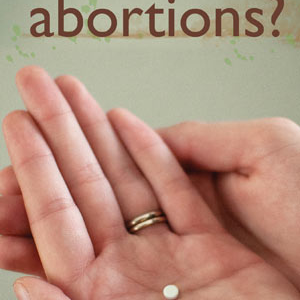by GEORGE J. MARLIN, 12 SEP 2014
Shortly after John J. O’Connor became Archbishop of New York in March 1984, he found himself in a battle with the state’s governor, Mario M. Cuomo, which not only made national headlines but also had a profound impact on the abortion debate in America.
It began when the archbishop said during a press conference: “I do not see how a Catholic, in good conscience, can vote for an individual expressing himself or herself as favoring abortion.” That didn’t sit well with Cuomo.
The governor, who in the early 1970s had been publicly pro-life, changed his position after losing a primary for lieutenant governor in 1973 and then a race for mayor in 1977. To advance his career, Cuomo adopted the now familiar line that, as a Catholic, he was personally opposed to abortion. But as an elected official it would be wrong for him to impose his religious beliefs on the general public. He went on the offensive about O’Connor’s comment, telling the New York Times:
The Church has never been this aggressively involved [in politics]. Now you have the Archbishop of New York saying that no Catholic can vote for Ed Koch [the N.Y.C. mayor], no Catholic can vote for [City Comptroller] Jay Goldin, for [City Council President] Carol Bellamy, for [U.S. Senator] Pat Moynihan or Mario Cuomo—anybody who disagrees with him on abortion. . . .The Archbishop says, “You Mario, are a Catholic who agrees with me that abortion is an evil”. . . . The Archbishop says, “OK, now I want you to insist that everybody believe what we believe.
Cuomo did not stop there; he described to Newsday what he believed were the potential implications of O’Connor’s remark:
So I’m a Catholic governor. I’m going to make you all Catholics—no birth control, you have to go to church on Sunday, no abortion. . . . What happens when an atheist wins? Then what do I do? Then they’re going to start drawing and quartering me.
At first, O’Connor appeared to back off. He told the Brooklyn Tablet that he had never said, “anywhere, at any time, that ‘no Catholic can vote for Ed Koch.’ . . . My sole responsibility is to present . . . the formal official teaching of the Catholic Church. I leave to those interested in such teachings [to judge how] the public statements of officeholders and candidates” match up.
In a New York magazine interview, he further explained:
I think there’s a deep disquiet in the national consciousness about this issue. People know it’s wrong. They know we’re killing. It’s not a matter of arguing the precise moment when a fetus becomes a baby—people know that thousands of real life human babies are being killed every day . . . and they don’t know what to do. They’re confused, upset about it. To me, that anguish is the only reasonable explanation of why I can utter a simple statement, a simple answer to a simple question—I don’t see how a Catholic in good conscience can vote for a politician who explicitly favors abortion—and immediately it becomes enormous news.
So O’Connor wasn’t backing off at all, and for him the debate was far from over.
After the Democratic National Convention nominated the first woman vice-presidential candidate, Congresswoman Geraldine Ferraro of Queens—a so-called pro-choice Catholic—O’Connor publicly criticized her for saying “things about abortion relevant to Catholic teaching which are not true”:
The only thing I know about her is that she has given the world to understand that Catholic teaching is divided on the subject of abortion. . . . As an officially approved teacher of the Catholic Church, all I can judge is that what has been said about Catholic teaching is wrong. . . . I have absolutely nothing against Geraldine Ferraro; I will not tell anybody in the United States you should vote for or against [her] or anybody else. . . . She has given the world to understand that Catholic teaching is divided on the subject of abortion [when there is] no variance, no flexibility, no leeway.
When the Congresswoman denied she had ever misinterpreted Church teaching, O’Connor released a copy of a letter Ferraro had signed and sent two years earlier to fifty Catholic members of Congress concerning a group called “Catholics For a Free Choice.” In it, she wrote that Catholics for a Free Choice “shows us that the Catholic position on abortion is not monolithic and that there can be a range of personal and political responses to the issue.”
This led to a 25-minute phone conversation between Ferraro and O’Connor during which the archbishop reemphasized that there is “simply no room for a ‘free choice’ on the matter of abortion . . . [T]he Second Vatican Council, Pope Paul VI, Pope John Paul II, and the bishops of the United States [have] made that abundantly clear.”
Mrs. Ferraro termed the conversation “cordial, direct and helpful,” but then she added, aping Cuomo, that:
when bishops speak out they are doing their duty as Church officials . . . .[W]hen I speak out I am doing my duty as a public official and my foremost duty as a public official is to uphold the United States Constitution, which guarantees freedom of religion. I cannot fulfill that duty if I seek to impose my own religion on other American citizens. And I am determined to do my duty as a public official.
The liberal establishment was appalled by what it viewed as O’Connor’s meddling. The New York Times pontificated:
It might as well be said bluntly. . .[the] effort to impose a religious test on the performance of Catholic politicians threatens the hard-won understanding that finally brought America to elect a Catholic President a generation ago.
Senator Ted Kennedy accused O’Connor of “blatant sectarian appeals” and argued that not “every moral command could become law.”
Mario Cuomo refused to sit on the sidelines. On September 13, 1984, he flew to America’s best known Catholic university, Notre Dame, to answer O’Connor in a talk titled “Religious Belief and Public Morality: A Catholic Governor’s Perspective.” Cuomo described himself to his audience, as “an old-fashioned Catholic who sins, regrets, struggles, worries, gets confused, and most of the time feels better after confession.”
“The Catholic Church,” Cuomo said, “is my spiritual home.” He added, “I accept the Church’s teaching on abortion,” but then asked, “Must I insist you do?”:
Our public morality then—the moral standards we maintain for everyone, not just the ones we insist on in our private lives—depends on a consensus view of right and wrong. The values derived from religious belief will not and should not be accepted as part of the public morality unless they are shared by the pluralistic community at large by consensus.
He evoked Cardinal Joseph Bernardin’s “seamless garment” argument, saying that abortion “has a unique significance but not a preemptive significance . . .[and] will always be a central concern of Catholics. But so will nuclear weapons. And hunger and homelessness and joblessness, all the forces diminishing human life and threatening to destroy it.”
And arguing that a consensus to ban abortion simply did not exist, Cuomo concluded:
I believe that legal interdicting of all abortions by either the federal government or the individual states is not a plausible possibility and, even if it could be obtained, it wouldn’t work. Given present attitudes, it would be Prohibition revisited, legislating what couldn’t be enforced and in the process creating a disrespect for law in general.
As historian Richard Brookhiser has written, “Cuomo had found, in consensus and prudence, a way of having religion when he wanted it to not having it when he didn’t.” The consensus argument was even too much for the very liberal Bishop of Albany, Howard Hubbard:
While I support wholeheartedly the governor’s position on capital punishment, there is no consensus in our state or nation on this matter. Quite the contrary. The polls show that 60 percent to 70 percent of the population favors the death penalty.
Also polls indicate that the vast majority of the citizens in New York are opposed to recent legislation about the mandatory usage of seat belts. Yet contrary to citizen consensus, the governor supports such legislation because it would save several hundred lives a year. Why not a similar concern about saving the thousands of human lives which are terminated annually through abortion on demand?
And the renowned theologian, Msgr. William B. Smith, dean of St. Joseph’s Seminary, agreed:
The governor’s style was smooth and slick, but the content was specious and misleading. He is obviously a competent man, but a couple of points were horrendous, one being the complete ignoring of the human rights issue. Human rights do not rest on consensus. Respect for the human rights of blacks, Jewish people—any minority—does not rest on consensus. This is why we call them inalienable rights. He relied on the 15-year old rhetoric of Planned Parenthood [that] we’re trying to impose our morality on others. The Supreme Court didn’t establish a consensus; it destroyed one. The laws in the 50 states weren’t there because the Catholic Church put them there.
A month later Archbishop O’Connor gave a speech before a Catholic Medical Group—with Mother Teresa sitting on the stage—in which he challenged the Cuomo thesis: “You have to uphold the law, the Constitution says. It does not say that you must agree with the law, or that you cannot work to change the law.”
There are those who argue that we cannot legislate morality. The reality is that we do legislate behavior every day. . . . It is obvious that law is not the entire answer to abortion. Nor is it the entire answer to theft, arson, child abuse, or shooting police officers. Everybody knows that. But who would suggest that we repeal the laws against such crimes because the law is so often broken.
He ended by reasserting his original public stance.
I have the responsibility of spelling out. . .with accuracy and clarity what the Church officially teaches. . . . I have simultaneously the obligation to try to dispel confusion about such teaching wherever it exists, however it has been generated, regardless of who may have generated it. . . . I recognize the dilemma confronted by some Catholics in political life. I cannot resolve that dilemma for them. As I see it, their disagreement, if they do disagree, is not simply with me [but] with the teaching of the Catholic Church.
For many Catholics, John O’Connor became a national hero. After years of bishops sitting on the sidelines, finally here was someone standing up and challenging whether Catholic politicians could separate their personal convictions from their public stance on abortion and still remain Catholic.
“I think,” said Patrick Ahern, an auxiliary bishop of New York, “John O’Connor upped the ante on abortion all by himself. He started the ball rolling, and the other bishops have been forced to follow along. I think, too, that it is an act of great courage, because they’re going to flay him over this before he’s finished.”
Flay him they did. The media consensus was that he was shilling for Ronald Reagan’s re-election. O’Connor remained unruffled. He told New York magazine reporter Joe Klein that he was “surprised by all the fuss,” and pointed out that was only saying what he’d always said:
In fact, when I was consecrated a bishop in Rome. . . . I vowed publicly that from that day on there would be some reference to the dignity of the human person and, in particular, to the defense of the most vulnerable—the unborn—in every public address I made. I have done that scrupulously since the day I became a bishop. I am not saying anything new. If that’s the case, why all the fuss?
O’Connor told Klein that other social issues also concerned him. For instance, during a September 1984 hospital strike, he said something that received very little press coverage, namely that no “Catholic Hospital could hire substitutes for the striking workers or threaten them in anyway.”
Nonetheless, he rejected the so-called seamless-garment approach. “I simply don’t see the rationale in saying that a politician is for better housing, a lower rate of unemployment, a more rational foreign policy—and the only thing wrong is that he supports abortion, so it’s okay to vote for him. You have to go back to the basic question: What is abortion? Do you think it’s the taking of innocent human life or don’t you? If you do, then translate it: How can we talk about a rational foreign policy or the horrors of nuclear war if we hold the position that you can take innocent human life?”
In January 1986, in a letter read at all Masses in the archdiocese on the anniversary of the Roe v. Wade decision, O’Connor described that day in 1973 as one of “national infamy.” From the pulpit in St. Patrick’s Cathedral, he told the faithful, “In 1984, when I talked strongly on the issues, I was accused of doing so because the national election campaign was in progress. I said then, ‘I’ll be talking about this in 1985 and 1986 and until the day I die.’” And so he did.
And O’Connor continued to critique the thin-skinned Mario Cuomo. In February 1986, he said, “I flat out think [Cuomo’s] wrong. I don’t think that makes him evil. It makes him wrong. He makes a serious effort to theologize his way through it and I think he’s been unsuccessful.” O’Connor was referring to Cuomo’s argument, repeated ad nauseam, that as an elected official he should not impose his religious views on the electorate.
The cardinal said that while Cuomo “has a great deal to offer on other issues, he [is] misguided about abortion.” O’Connor specifically criticized Cuomo for supporting Medicaid funding for abortion “without any constitutional requirement to do so.”
The public envelope was pushed further in August 1986 when a routine newsletter signed by the vicar general, Bishop Joseph O’Keefe, arrived at 410 parishes containing this paragraph, which was directed towards pro-abortion politicians and spokesmen:
Great care and prudence must be exercised in extending invitations to individuals to speak at parish-sponsored events, e.g., Communion breakfasts, graduations, meetings of parish societies, etc. It is not only inappropriate, it is unacceptable and inconsistent with diocesan policy to invite individuals to speak at such events whose public position is contrary to and in opposition to the clear, unambiguous teaching of the Church. This policy applies, as well, to all Archdiocesan owned or sponsored institutions and organizations.
The pro-abortion crowd and New York’s liberal establishment became unhinged over the announcement. Catholics for a Free Choice protested that the archdiocese had “nailed [the door] shut to prevent its members from being heard.”
A New York Times editorial described the directive as a “revival” of the argument between O’Connor and Cuomo “about how fervently Catholics in public office must oppose abortion.”
Initially, Governor Cuomo declined to comment, saying he had not read the statement. But a member of his press office coyly said that it “doesn’t seem to apply to the Governor” who “is totally within the confines of Church teaching.”
Defending the policy, Bishop O’Keefe said he was not denying free speech. “I’m not saying we shouldn’t listen. I’m not afraid to listen to anybody’s opinion. But when you are bringing together a church society, it is inappropriate to invite people who divide your community.” The bishop added that when he decided to issue the directive, “I never even thought of the Governor.”
On September 4, Cuomo, who was in the midst of a re-election campaign, went on the offensive. “We lay people have a right to be heard,” he declared. “It is very difficult to see how this [directive] would be implemented.” In typical Cuomo fashion he raised a host of questions to confuse the issue. “From what I’m told, it applies to Church teaching. But what is Church teaching? When are you teaching infallibly and when aren’t you? What people, which people will decide who agrees with Church teaching? Will you have ecclesiastical courts?”
Reacting, Monsignor Peter Finn, Director of Communications for the archdiocese, dismissed Cuomo’s comments, saying they were “nonsense.” “I hardly think,” Finn continued, “our local synagogue would be about to invite a P.L.O. [member] to their seder any more than a church in Harlem would invite Mr. Botha [the president of South Africa] to their supper. So I don’t understand. What’s the problem? In a response to a request from many people about what the guidelines should be for inviting people for speaking, a guideline was given. Period. . . . I think it’s very clear as far as the Church is concerned, what it means by ‘differing with the Church’s teachings.’”
Bishop O’Keefe joined the fray, ridiculing Cuomo’s Notre Dame speech as “the encyclical by Mario.” He also said that “under no circumstances would I invite [Cuomo] to speak to young people at a graduation” because “he would confuse young people.”
Cuomo did, however, concede to a Times reporter that “The Church has the right to make rules for itself, there’s no doubt about that. The Church has the right to make rules. It can say ‘If you want to belong these are the rules.’ But depending on what the rule was, one can say whether it was wise or whether it was unwise.”
The September 11 issue of Catholic New York published the cardinal’s response to Church critics in a column titled “A Matter of Common Sense.” O’Connor threw down the gauntlet, asking “how much further are the nonsensical allegations going to go on?”
Imitating Cuomo’s rapid-fire approach, the cardinal asked,
“So what is all this furor about? What is all this fuss about? What is the nonsense I read about squelching ‘free speech’? Where is the deep, dark sinister political motivation that some choose to see? When did common sense, or a sense of appropriateness, become unconstitutional or un-American? Why the hysterics that leads a columnist to speak of the ‘thought police’ of the Archdiocese of New York? (A rather nasty Nazi-like implication there, wouldn’t you say?)”
The cardinal also addressed Cuomo’s inquires as to who decides who will be heard: “Who is supposed to make the judgment in such matters? Our pastors, with the guidance of our Vicar General, are charged by Church law and by my delegation to provide guidance. Are we to have a Church in which everyone’s judgment is equal to everyone else’s? That’s not a Church, it’s chaos.”
The cardinal’s column was not his final word on the subject.
In November 1989, the cardinal took two active steps in support of his words. First, he became chairman of the U.S. Bishops’ Committee for Pro-Life Activities. That same month he urged the founding of a new order of nuns, the Sisters of Life, who would take an additional vow to defend human life against abortion and euthanasia. Nine women took up his challenge in June 1991 and co-founded the order, which thrives to this day.
On January 31, 1990, O’Connor defended his auxiliary bishop, the vicar of Orange County, Austin Vaughan, who had spent ten days in an Albany jail for protesting in front of an abortion clinic. While incarcerated, Vaughan stated that Governor Cuomo was “in serious risk of going to hell” because of his “active support of abortion rights and government financing of abortion.”
In his Catholic New York column, the cardinal, describing Vaughan as “one of the finest theologians I know,” continued:
I read in the newspapers that His Excellency, the Auxiliary Bishop of New York, had “’cursed” His Excellency, the Governor of New York, “’to hell.”’ Indeed, the Governor is quoted as saying: “I get condemned to hell for not agreeing [on abortion].”
“Not so,” Bishop Vaughan told me, “very much not so,” when I spoke with him after his release from prison. He went on to say that he is well aware that he has no power whatsoever to condemn anyone to hell. He would agree with the Governor completely that such an unpleasant task is exclusively the prerogative of a much higher and wiser power.
He told me, too, that despite the newspaper reports, he had never suggested for a moment that he would be happy to see me refuse the Governor Holy Communion. In fact, he says he was asked by the press whether he, Bishop Vaughan, would excommunicate the Governor, and replied that he had no authority to do so and would not think it a good idea anyway.
That out of the way, would anyone deny that the Bishop has the right and even the obligation to warn any Catholic that his soul is at risk if he should die while deliberately pursuing any gravely evil course of action, and that such would certainly include advocating publicly, as the Bishop puts it, “the right of a woman to kill a child.” What the Bishop told me he actually said was that the Governor is “quite possibly contributing to the loss of his soul.” To me that sounds significantly different from “cursing” or “condemning” the Governor to hell. . . .
I do have one major concern, however, and it’s not the highly confused report on who said what in the newspaper stories. It’s that such stories tend to distract from the real issue, that abortion, as the Second Vatican Council puts it, is an “abominable crime.” That, neither political fortunes nor ecclesiastical sanctions, is the bottom line.
Reacting to O’Connor’s column, Cuomo had a terse reply: “The Cardinal says the Bishop was misquoted, I’m glad.”
A June 14, 1990, special edition of Catholic New York contained a twenty-thousand-word Q&A written by O’Connor that addressed almost every conceivable subject concerning abortion, including suggestions to doctors, lawyers, educators, and parents “to advance the cause of life.”
What caused headlines was this statement:
Where Catholics are perceived not only as treating Church teaching on abortion with contempt, but helping to multiply abortions by advocating legislation supporting abortion or by making public funds available for abortion, bishops may decide that . . . such Catholics must be warned that they are at risk of excommunication. If such actions persist, bishops may consider excommunication the only option.
O’Connor went on to state that, at the same time, “the Church does not want to make ‘martyrs’ of individuals by punishing them. It is up to the local bishop to use his best judgment concerning particular cases.”
Of the “personally opposed” position, O’Connor stated that it “says, in effect, ‘In public life I will act indistinguishably from someone who sees abortion as a positive social good, but please know that I will do so with personal regret.’ This regret is hardly effective, since it serves the agenda of those who actively favor abortion.”
While the archdiocese’s communications director, Joe Zwilling, said that O’Connor’s Q&A was “not written with anyone in mind,” the New York Timesreported that Governor Cuomo “appeared to take it personally.” Cuomo told the Times, “It is difficult to discuss it. It is upsetting. I don’t like to hear it. How could you? This is something very fundamental to our family.”
Cardinal O’Connor kept up the battle on abortion for the rest of his life. And when O’Connor lay dying in 2000, his old adversary, Mario Cuomo, conceded in a New York Times op-ed piece that the archbishop “was an extraordinary prince of the Church who has always been a priest first.”
America could do with such another.
George J. Marlin is the author/editor of eleven books including The American Catholic Voter: Two Hundred Years of Political Impact. This essay was excerpted from his forthcoming book, co-authored with Brad Miner, The Sons of St. Patrick’s: A History of the Archbishops of New York.







IUD best choice for underage girls: American Academy of Pediatrics
By Kirsten Andersen
Life Site News
The American Academy of Pediatrics (AAP) has updated their policy guidelines (PDF) concerning contraceptives for children under 18, recommending that the first line of defense against pregnancy for adolescent girls should be implantable contraception such as an IUD or a sub-dermal hormonal implant.
The AAP says that because young girls cannot be trusted to remain abstinent, reliably take a daily birth control pill, or use condoms, the best way to ensure they do not become pregnant is to fit them with a “long-acting reversible contraceptive” – a device that, once installed, will either provide a continuous dose of hormones designed to prevent ovulation, or prevent a fertilized egg from implanting, causing an early abortion. The group says that even very young girls who are not yet sexually active can be fitted with the devices, as a preventive measure.
The recommendations were co-authored by Gina Sucato, a member of Physicians for Choice. Upon their public release on Monday, they were met with mixed reactions.
“I’m so happy about this,” said Ana Radovic, a doctor at the Center for Adolescent and Young Adult Health, a sex clinic for children and young adults ages 12 to 21. Her organization provides IUDs and other contraceptives to children as young as 12, without requiring parental notification or consent. It also offers similar “confidential care” through the nearby Magee-Women’s Hospital, which performs abortions.
Radovic told the Pittsburgh Post-Gazette she was eager to see more doctors implanting young children with IUDs. “This will give primary care physicians and pediatricians the much needed information that this is a safe procedure, even for young girls who have never had intercourse,” she said.
“The AAP’s recommendations will be a great help,” Heather Boonstra, director of public policy for the Guttmacher Institute – a pro-abortion think tank with links to Planned Parenthood – told the Post-Gazette. “This is about trying to change the minds of the provider community, more of who are recognizing that adolescents are appropriate users for the IUD.”
But child safety advocates and pro-life observers said the AAP recommendations send a dangerous message, and could even lead to lifelong health problems.
“As a father myself, I’m particularly horrified that this recommendation would come from this physicians’ group,” said Eric Scheidler, executive director of the Pro-Life Action League, in an interview with LifeSiteNews. “Everybody knows that teen sex is a bad idea, and a recommendation like this sends a mixed message. On the one hand, we’re trying to encourage teens to be abstinent, and on the other, we’re giving them the tools not to be.”
“We know that the biggest concern teens have about teen sex isn’t STDs, it isn’t the heartbreak that comes from it, it isn’t damaging their ability to bond later in life. The big concern they’re going to have is getting pregnant. Take that [concern] away, and teens are inevitably going to make less responsible choices.”
Scheidler said he was also concerned about the AAP’s heavy focus on “confidentiality,” which he said was really about “keeping parents in the dark” about their kids’ activities.
“The [AAP] recommendation not-so-obliquely suggests that even in states where [doctors] are not forbidden to talk to parents, [that they] not do so anyway,” he said.
Scheidler worries that giving children under the age of consent unfettered access to contraceptives could make it easier for rapists to hide their sexual abuse of minors.
“It’s just one more example of the mixed message and the contradiction here,” Scheidler said. “You know, the first contradiction is … we don’t want teens to be sexually active, that we should encourage them to be abstinent, but then we’ll discourage them from being abstinent by giving them birth control. Similarly, we say to physicians, you’re required to report sexual abuse of minors, but you’re also required not to tell parents about their minor children’s sexual activity – which in many cases, might by definition be criminal.”
Aside from the moral implications of fitting kids with long-term contraceptive devices, Scheidler said he was also disturbed from a safety standpoint.
There are two types of IUDs currently on the market in the U.S. – hormonal and copper. The hormonal IUD, marketed under the brand names Mirena and Skyla, releases a constant dose of hormones to fool the body into thinking it is already pregnant, so it won’t release an egg. Failing that, the device makes the uterus inhospitable to a growing life, causing an early abortion. Mirena lasts for five years; Skyla, which is targeted at younger girls, lasts for three. Skyla is new to the market, but its big sister Mirena has been the target of thousands of lawsuits by users who suffered catastrophic complications, and is now the subject of a class-action suit.
The damaging effects of the Mirena IUD are numerous, but the primary risk is puncture of the uterine wall, which can occur in up to 1 out of every 1000 installations, according to its manufacturer, Bayer. Uterine perforation can lead to intestinal, bladder, bowel, or other organ damage; infections; scarring; infertility and even death from sepsis. Additionally, the chemicals released by the device have been classified by the World Health Organization as class 1 carcinogens, or cancer-causing agents.
As for the copper IUD, it carries the same risks of uterine perforation as its hormonal counterparts, but without the increased risk of cancer and other side effects caused by the chemical component. However, the trade-off is that it doesn’t work until a woman or girl is already pregnant – it effectively works as a tiny “abortion machine,” ensuring that no fertilized egg can attach to the uterine wall.
None of the implantable devices being promoted by the AAP offer any protection from sexually transmitted diseases.
“You know, I have three teen daughters myself,” Scheidler told LifeSiteNews. “The thought of them being counseled by a physician to consider the IUD or one of the implantable contraceptives is pretty shocking.”
In previous years, the IUD lacked in popularity due to its expense – a single device costs between $800 to $1,000. However, since ObamaCare became law, all insurance providers must now provide the IUD free of charge to their female patients upon request.
Additionally, federally-funded reproductive clinics provide the devices free to girls under 18, even if they are covered by their parents’ insurance, in order to help them avoid disclosing their sexual activity to their parents.
Posted in News & Commentary | No Comments »